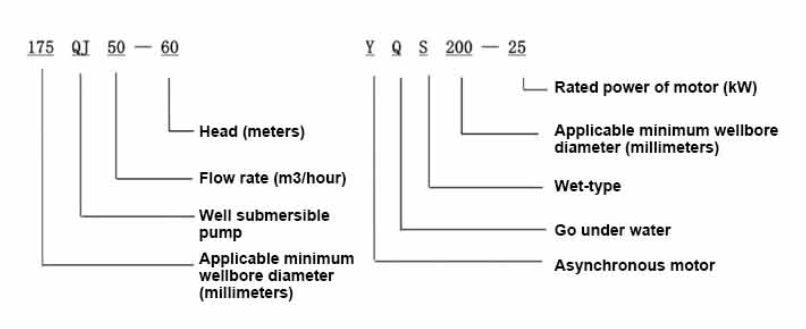Nov . 23, 2024 20:34 Back to list
Guidelines for Effectively Operating a Submersible Pump in Various Applications
How to Use a Submersible Pump A Comprehensive Guide
Submersible pumps are versatile and efficient machines designed to operate underwater. They are commonly used for draining basements, removing excess water from flooded areas, and pumping water from wells or ponds. While using a submersible pump may seem straightforward, understanding proper techniques and safety precautions is essential to ensure efficient operation and longevity of the machine. This article outlines how to effectively use a submersible pump.
Understanding Submersible Pumps
A submersible pump consists of a motor that is sealed and immersed in the fluid it is designed to pump. The motor is typically situated at the bottom of the pump and is connected to a series of impellers that help move the fluid. This design allows the pump to be submerged underwater, making it efficient for lifting water from deep sources.
Choosing the Right Submersible Pump
Before you start using a submersible pump, it’s crucial to select the right type. Different pumps cater to various needs
1. Sump Pumps Ideal for removing water from basements or crawl spaces. 2. Well Pumps Specifically designed for extracting water from well depths. 3. Dirty Water Pumps Suitable for sewage or wastewater applications.
Ensure that the chosen pump fits the specific needs of your project, considering the depth and volume of water you need to move.
Setup Process
Setting up a submersible pump involves a few key steps
1. Inspect the Pump Before using the pump, check for any signs of damage or wear. Ensure that the power cord is intact and the housing is not cracked.
2. Choose a Suitable Location Place the pump in an area with adequate drainage and ensure that the inlet screen is not obstructed. For wells, the pump needs to be submerged below the groundwater level.
3. Connect the Discharge Hose Attach the discharge hose to the pump's outlet. Make sure it is secured tightly to prevent leaks. The hose must lead to a safe drainage location away from the area you want to clear.
how to use submersible pump

4. Power Supply Connect the pump to a GFCI (Ground Fault Circuit Interrupter) outlet to ensure safety. Avoid using extension cords that could lead to voltage drop or electrical hazards.
Operating the Pump
Once the setup is complete, follow these steps to operate the pump
1. Submerge the Pump Carefully lower the pump into the water. Make sure it is fully submerged to allow for proper functioning.
2. Power on the Pump Plug the pump into the electrical supply and turn it on. Most submersible pumps will have an on/off switch on the body or a remote controller.
3. Monitor the Operation Keep an eye on the pump while it operates. Look for unusual noises or vibrations, which could indicate a problem. If the pump begins to sputter, it may be running out of water, so turn it off immediately.
4. Turn Off the Pump Once the water has been removed or the desired level has been reached, switch off the pump. Always allow it to cool down for a few minutes before removing it from the water.
Maintenance Tips
Maintaining your submersible pump will ensure its longevity and performance. Here are some tips
- Regular Cleaning After each use, clean the inlet screen and remove any debris that might clog it. - Inspect the Power Cord Regularly check the power cord for wear and tear, replacing it if necessary. - Seasonal Checks Before heavy usage seasons, inspect the pump to ensure it’s in good working condition.
Conclusion
Using a submersible pump efficiently can save you time and effort when dealing with water removal tasks. By selecting the right pump, ensuring a proper setup, and adhering to safety precautions, you can achieve optimal results. Regular maintenance further enhances the lifespan of the pump, ensuring it remains a reliable tool for all your water management needs. Whether you are a homeowner or a contractor, mastering the use of submersible pumps will serve you well for years to come.
-
Submersible Water Pump: The Efficient 'Power Pioneer' of the Underwater World
NewsJul.01,2025
-
Submersible Pond Pump: The Hidden Guardian of Water Landscape Ecology
NewsJul.01,2025
-
Stainless Well Pump: A Reliable and Durable Pumping Main Force
NewsJul.01,2025
-
Stainless Steel Submersible Pump: An Efficient and Versatile Tool for Underwater Operations
NewsJul.01,2025
-
Deep Well Submersible Pump: An Efficient 'Sucker' of Groundwater Sources
NewsJul.01,2025
-
Deep Water Well Pump: An Efficient 'Sucker' of Groundwater Sources
NewsJul.01,2025
-
 Submersible Water Pump: The Efficient 'Power Pioneer' of the Underwater WorldIn the field of hydraulic equipment, the Submersible Water Pump has become the core equipment for underwater operations and water resource transportation due to its unique design and excellent performance.Detail
Submersible Water Pump: The Efficient 'Power Pioneer' of the Underwater WorldIn the field of hydraulic equipment, the Submersible Water Pump has become the core equipment for underwater operations and water resource transportation due to its unique design and excellent performance.Detail -
 Submersible Pond Pump: The Hidden Guardian of Water Landscape EcologyIn courtyard landscapes, ecological ponds, and even small-scale water conservancy projects, there is a silent yet indispensable equipment - the Submersible Pond Pump.Detail
Submersible Pond Pump: The Hidden Guardian of Water Landscape EcologyIn courtyard landscapes, ecological ponds, and even small-scale water conservancy projects, there is a silent yet indispensable equipment - the Submersible Pond Pump.Detail -
 Stainless Well Pump: A Reliable and Durable Pumping Main ForceIn the field of water resource transportation, Stainless Well Pump has become the core equipment for various pumping scenarios with its excellent performance and reliable quality.Detail
Stainless Well Pump: A Reliable and Durable Pumping Main ForceIn the field of water resource transportation, Stainless Well Pump has become the core equipment for various pumping scenarios with its excellent performance and reliable quality.Detail
